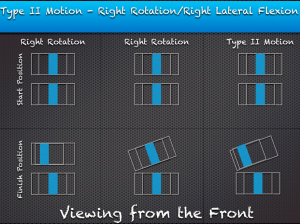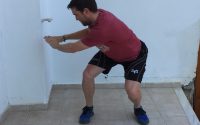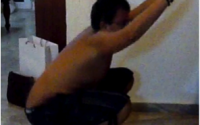Fryette’s Laws
I was recently discussing strategies for a Parkinsons patient with a friend and we started discussing Fryette’s laws. These are a set of three laws that describe the movements of the spine. Laws I and II are for the lumbar and thoracic spine and state that when the spine is in ‘neutral’ that side bending to one side will be accompanied by rotation to the opposite side, i.e. if you side bend to the right the spine will rotate to the left.


The second law describes how in either flexion or extension the spine will choose type II motion, which is lateral flexion and rotation in the same direction, i.e. right lateral flexion and right rotation.
The third law was added about 30 years after the original 2 were written and applies to the whole spine. The third law describes how if you take up motion in one plane you will reduce the amount of motion available in the other planes. For example, if the spine is particularly flexed you will lose lateral flexion and rotation. And though this is not the only problem for the Parkinson’s patient this lack of spinal motion will contribute to the alterations in gait and balance.
For example, if you cannot laterally flex or rotate the spine adequately it will effect the movement of the pelvis and in turn will limit the hip motion reducing the stride length and inhibiting the ability to clear the foot off the floor during the swing phase of gait. Though these are not the only causes of loss of balance, they do increase the risk of falls in this population.
Obviously, there are many conditions and treatment strategies that are affected by these laws and benefit from an understanding of them. For instance, we see ‘postural dysfunction’ all the time, most commonly increased thoracic kyphosis combined with protracted shoulders and a forward head posture. This means that the thoracic and cervical spine have taken up significant motion in the sagittal plane (thoracic into flexion, lower cervical in flexion and mid to upper cervical into extension).
As we talked about in the third law, taking up this motion in the sagittal plane will limit the motion in lateral flexion and rotation. So it is no wonder they get pain and stiffness in their neck! However, when assessing and treating you may find they have pain, stiffness and decrease range in right rotation, however, there is little point in treating right rotation as by addressing their sagittal plane dysfunction right rotation will become less of a problem. This doesn’t mean you never treat right rotation in this case, but it may take a different place in your list of priorities.
Please post any questions you have in the comments section. And feel free to share the post with the Social Media buttons below…Thanks.
Physioblogger


